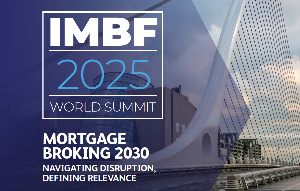In a move that was widely forecast, the Reserve Bank cut the OCR by 25 basis points to 3.0% this morning.
Reserve Bank Governor Graeme Wheeler said the reduction was warranted by the softening in the country’s economic outlook and low inflation.
He added that further easing seemed likely.
Economists were not surprised by the news, but were interested in the change in language in the RBNZ’s statement.
There was a clear bias to downwards easing in the statement which signals further cuts are on the way, according to ASB chief economist Nick Tuffley.
He said that, in a nutshell, the decline in dairy prices and soft inflation have changed the RBNZ’s outlook for the economy.
“The economy needs more stimulation. While the New Zealand dollar has fallen of late, further decline is needed. But the RBNZ’s language does reflect the fact the exchange rate is no longer unsustainably high.”
He sees the RBNZ cutting the OCR again in September and then in October, by 25 basis points each time.
The RBNZ’s line that “further easing seems likely” did indicate further cuts are to come, agreed NZIER senior economist Christina Leung.
She said there has been increasing speculation that there will be a 50 basis point cut at some point, so that the OCR goes as low as 2%.
But the announcement today suggested to her that the RBNZ doesn’t have the appetite to go quite that far.
“The country’s economic outlook is not as weak as has been said,” she continued.
For example, the New Zealand dollar’s sharp fall has given a boost to [non-dairy] export sectors and to services like tourism.
Further, there is solid construction activity in Auckland and Christchurch, while the decline in the New Zealand dollar should provide a bit of a buffer for falling dairy prices.
Leung said NZIER expected a 25 basis point cut in September and possibly another in October - although that didn’t seem warranted as yet.
Both Tuffley and Leung noted that the New Zealand dollar and New Zealand wholesale interest rates both moved slightly higher after the RBNZ’s announcement.
However, they both said this was largely due to the fact the market had priced in the small chance of a more aggressive 50 basis point cut.
As this did not happen, the market was unwinding that speculative position.
Meanwhile, Westpac chief economist Dominick Stephens interpreted the RBNZ’s announcement in a less dovish fashion.
He said the RBNZ’s blunter language was clearly signalling deeper OCR cuts than the 3% low-point advised in its June Monetary Policy Statement.
“We are not surprised that the RBNZ sees the need for further cuts. However, we are also unsurprised that the RBNZ has moved relatively cautiously at this OCR review.”
There was nothing in the RBNZ’s statement to cause Westpac to alter its forecasts, Stephens said.
“We remain comfortable calling a 2.0% low-point in the OCR, with the odds favouring a 50bps reduction at some point, most likely in September.”
Following the OCR cut, a number of banks - including ANZ, Kiwibank and SBS Bank - made cuts to a range of their rates.





Comments
No comments yet.
Sign In to add your comment